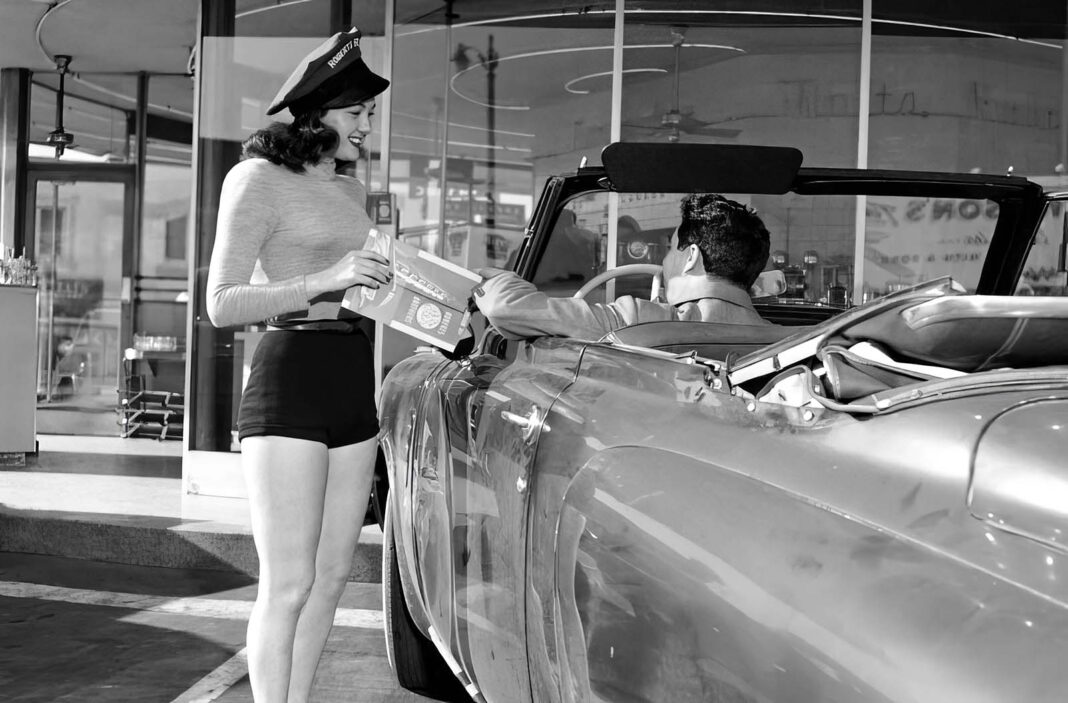Long before the era of fast-food drive-throughs, there was a time when meals were served on wheels—literally.
The carhop became a symbol of mid-century Americana, blending convenience, charm, and a touch of showmanship.
These waiters and waitresses delivered burgers, fries, and milkshakes directly to customers seated in their cars, often balancing trays with effortless grace.
While many worked on foot, the image of a smiling server gliding across the pavement on roller skates became an enduring icon of postwar pop culture, celebrated in films like American Graffiti and the TV classic Happy Days.
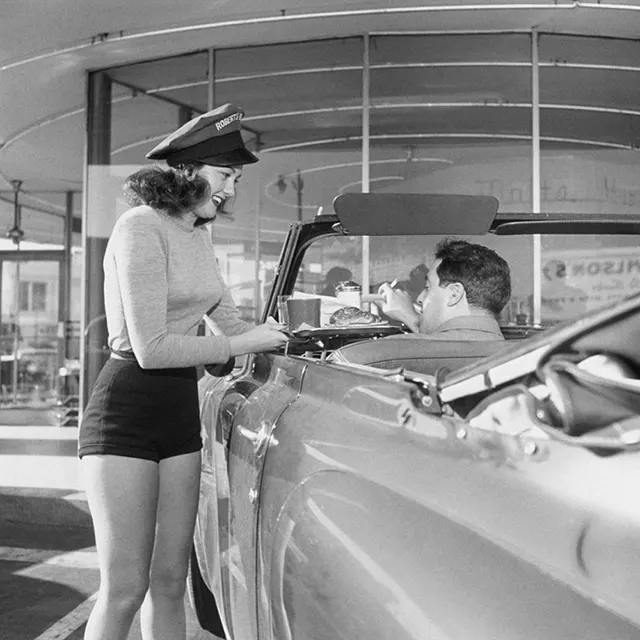 Carhops weren’t just food service workers—they were part of the drive-in experience that defined an entire generation’s idea of leisure, youth, and style.
Carhops weren’t just food service workers—they were part of the drive-in experience that defined an entire generation’s idea of leisure, youth, and style.
The story of the carhop began in 1921, in Dallas, Texas, when automobiles were becoming a fixture of American life.
Seeing an opportunity in the nation’s growing love affair with cars, businessman J.G. Kirby and physician R.W. Jackson opened a restaurant called the Pig Stand.
Their idea was simple yet revolutionary: serve meals directly to customers without requiring them to leave their vehicles.
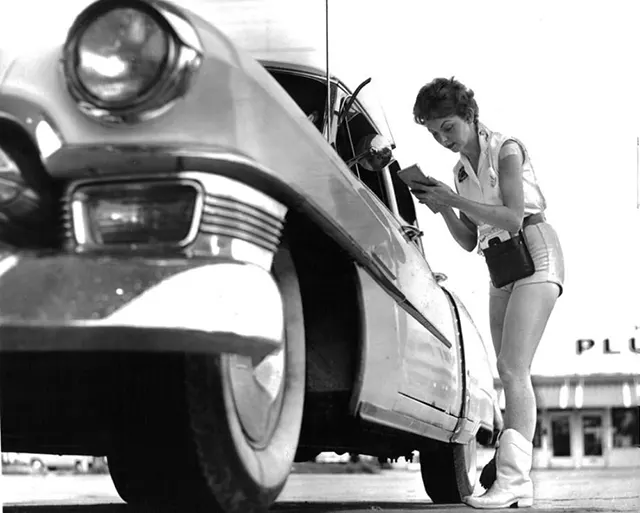 The concept quickly caught on, with male carhops darting between rows of gleaming automobiles.
The concept quickly caught on, with male carhops darting between rows of gleaming automobiles.
Just two years later, A&W Restaurants claimed to have introduced their own version of carhop service, helping spread the trend across the country.
The term “carhop”—inspired by “bellhop,” the hotel attendant—would not appear in print until 1937, but by then the concept had already become part of America’s roadside culture.
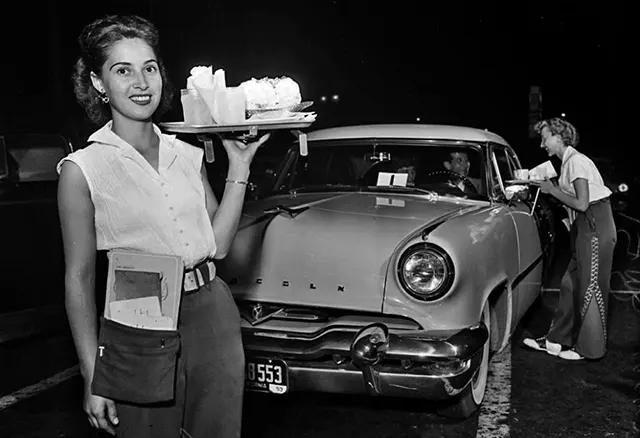 When World War II reshaped the workforce, women stepped into roles once held by men, including those at the drive-ins. Female carhops became a common sight, bringing a touch of glamour to the curbside dining scene.
When World War II reshaped the workforce, women stepped into roles once held by men, including those at the drive-ins. Female carhops became a common sight, bringing a touch of glamour to the curbside dining scene.
Restaurateurs soon realized that friendly, attractive women not only provided excellent service but also drew in more customers, turning the drive-in into a social hub for soldiers on leave and teenagers alike.
Yet the job wasn’t without risks—many women faced unwanted attention and safety challenges while working late shifts in busy parking lots.
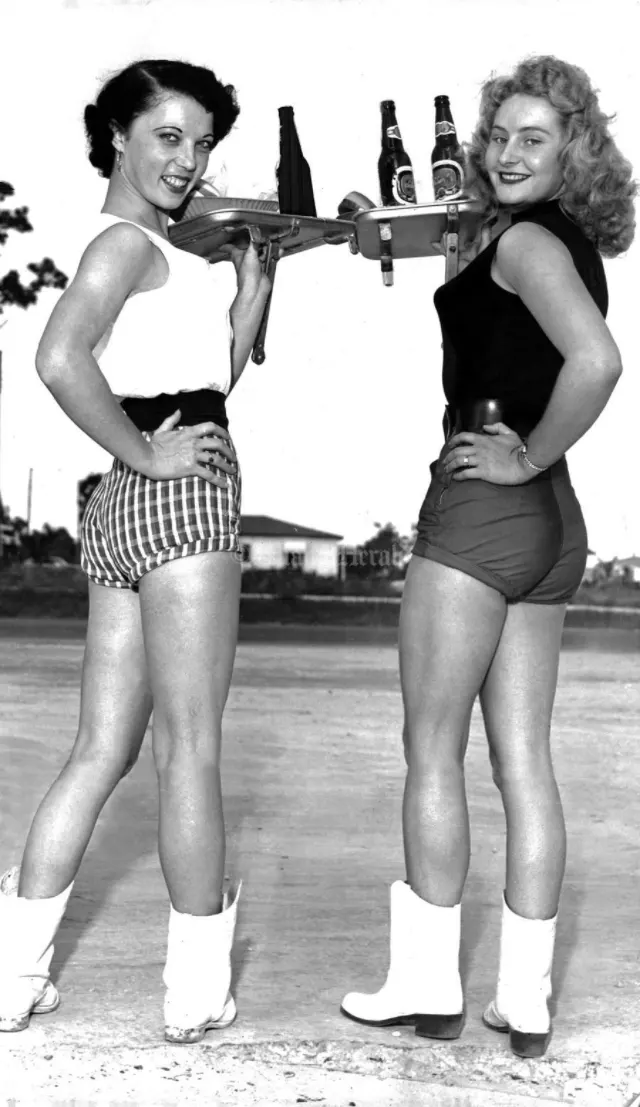 By the mid-1960s, America’s dining habits began to change. Traditional drive-ins were slowly replaced by restaurants with indoor seating and faster drive-through windows.
By the mid-1960s, America’s dining habits began to change. Traditional drive-ins were slowly replaced by restaurants with indoor seating and faster drive-through windows.
The roller-skating carhop faded into nostalgia, remembered fondly through vintage photographs and the occasional retro revival.
Carhops can still be found at a few remaining original drive-in stands and nostalgic fast food establishments, mostly in smaller and rural towns with local ownership. Sonic Drive-In still employs carhops at most of their restaurants.
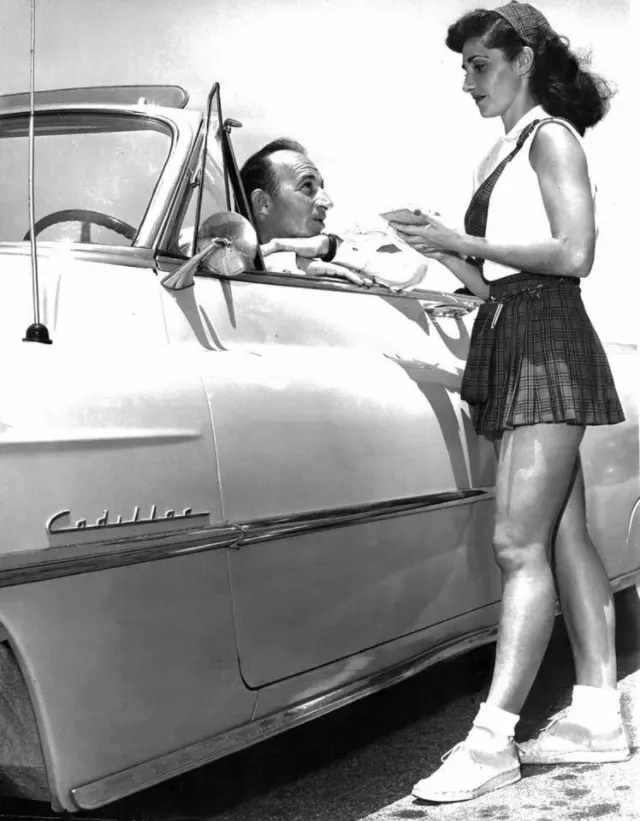 The uniforms of early carhops were important, as many drive-ins were competing and something eye-catching was seen as gamesmanship.
The uniforms of early carhops were important, as many drive-ins were competing and something eye-catching was seen as gamesmanship.
There was often a military, airline, space age, or cheerleader theme, or any other concept an owner thought would bring customers in.
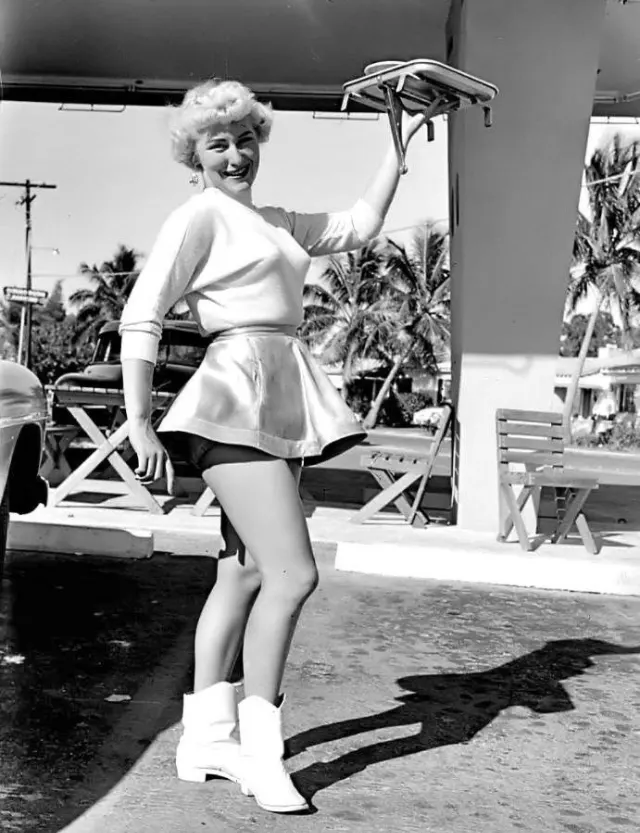
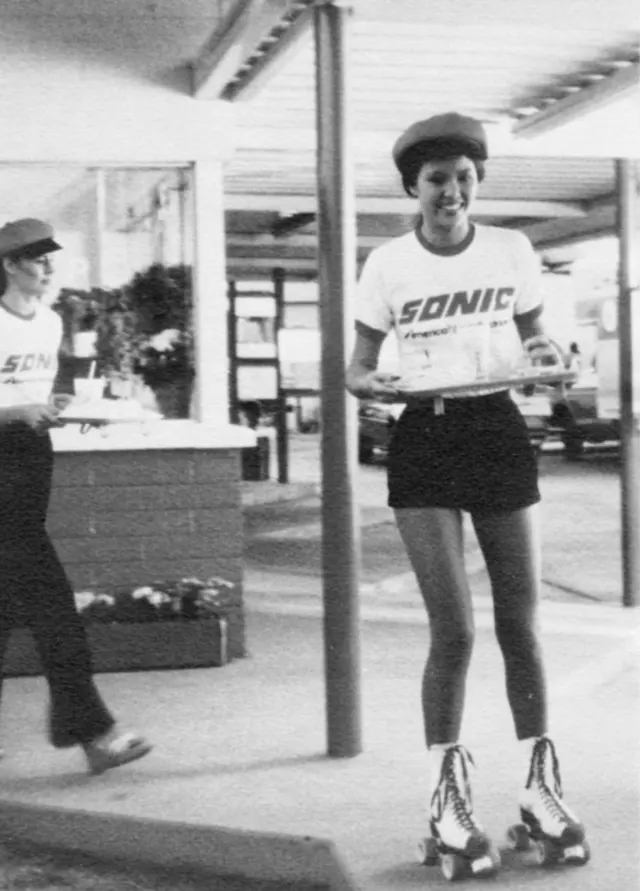
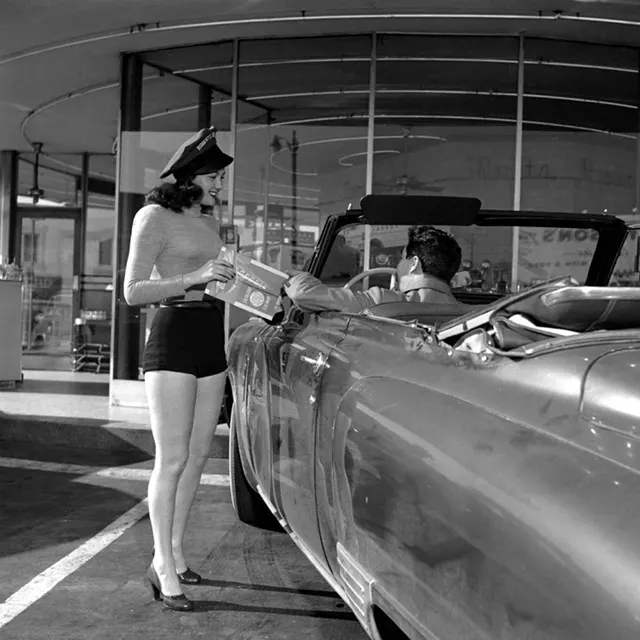
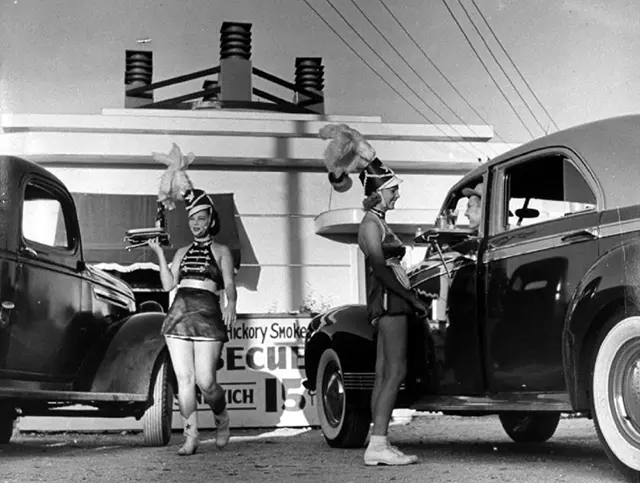
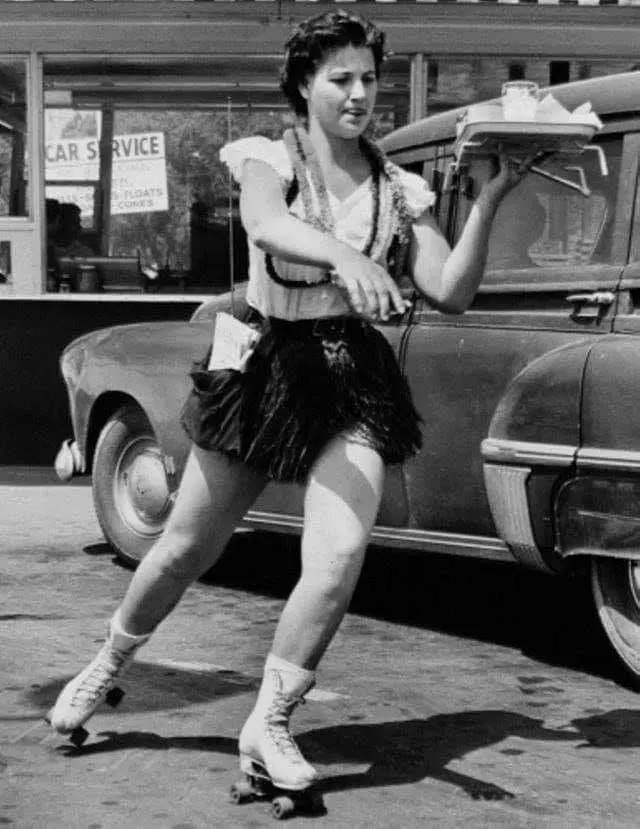
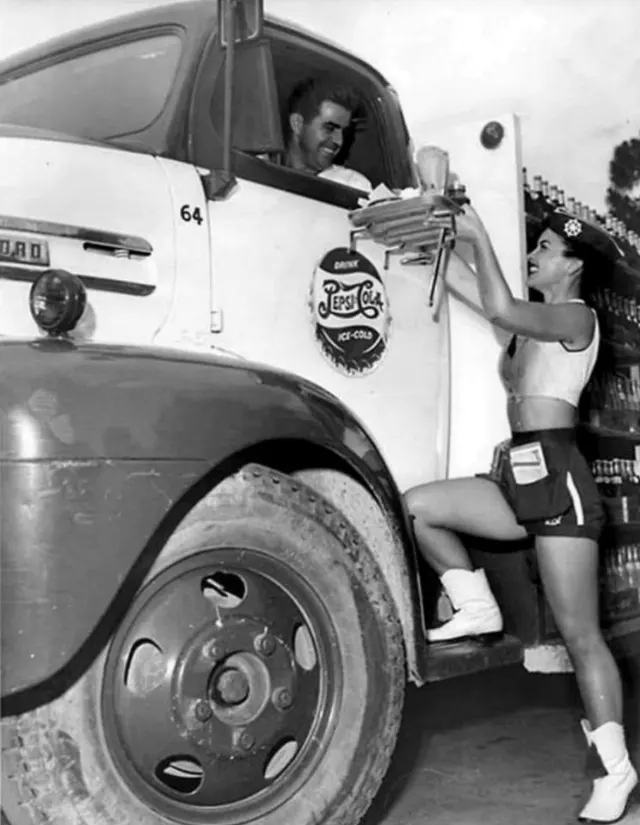
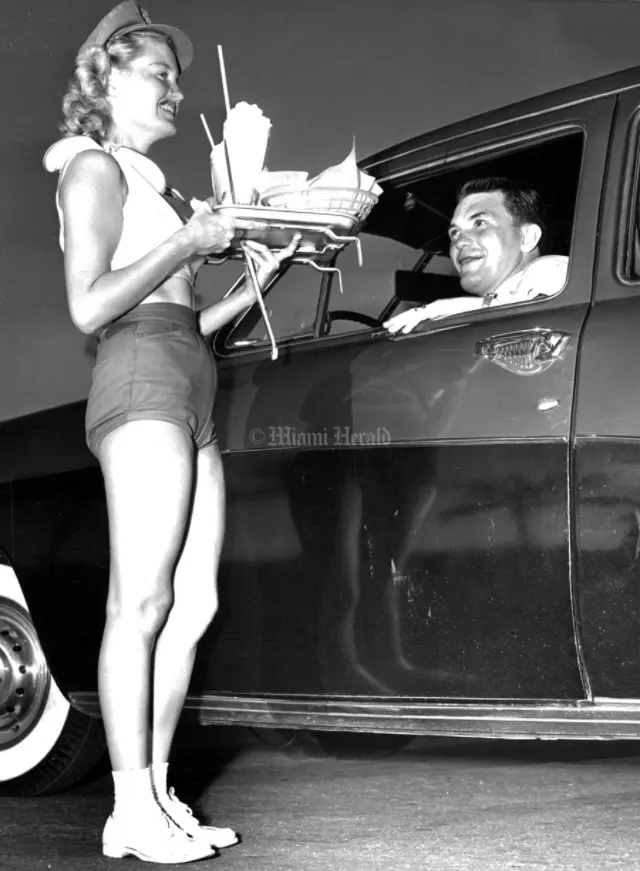
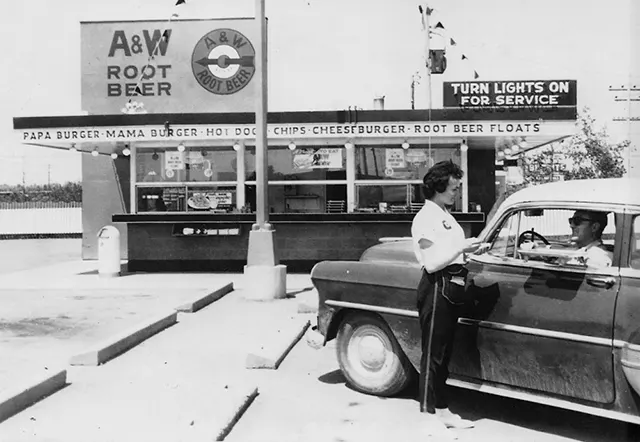
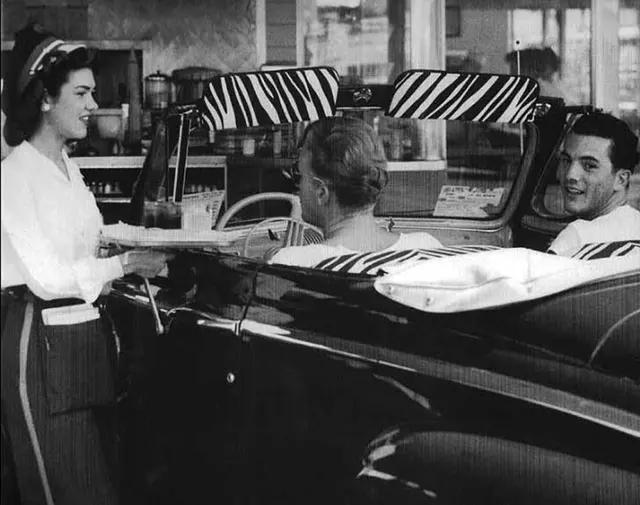
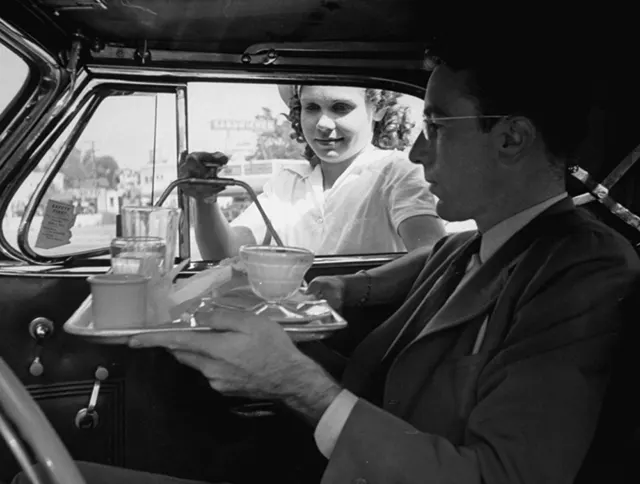
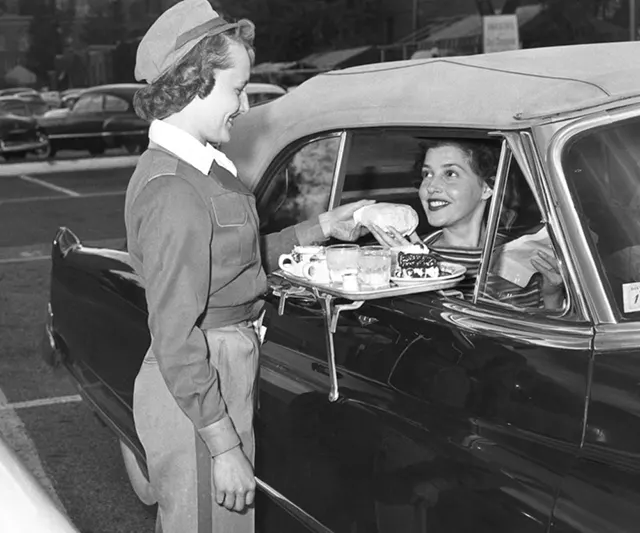
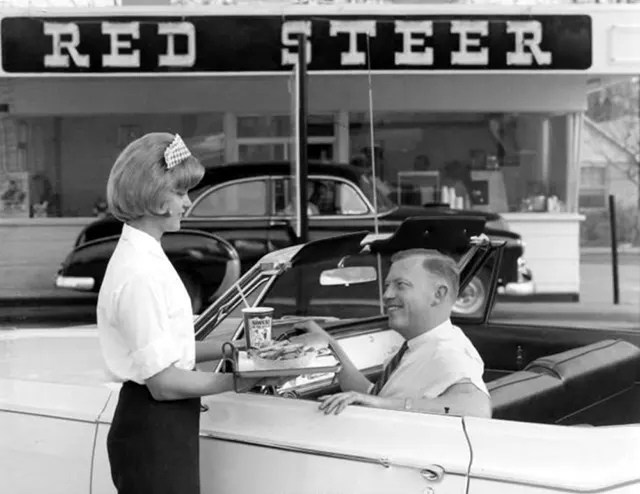
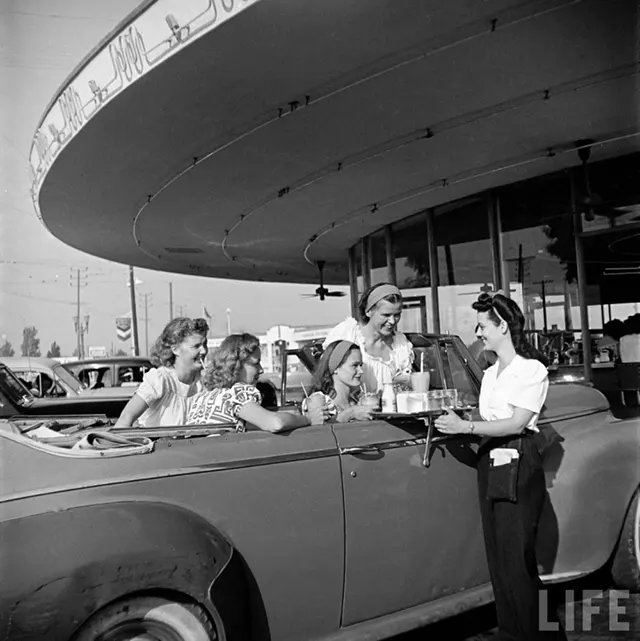
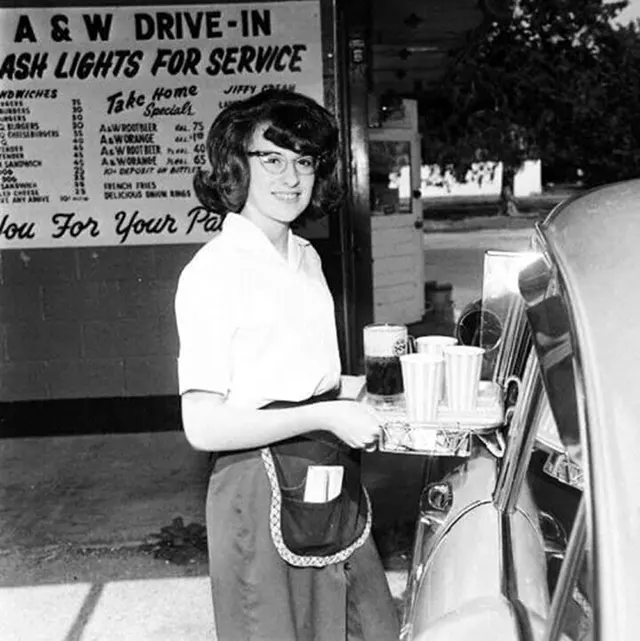
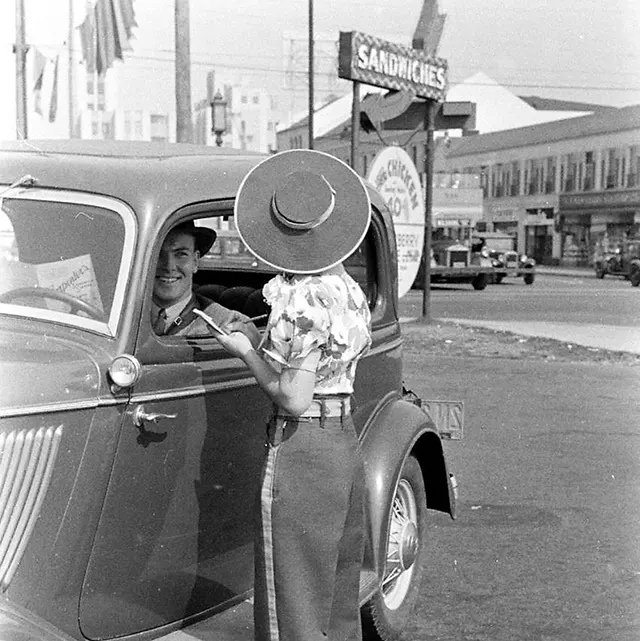
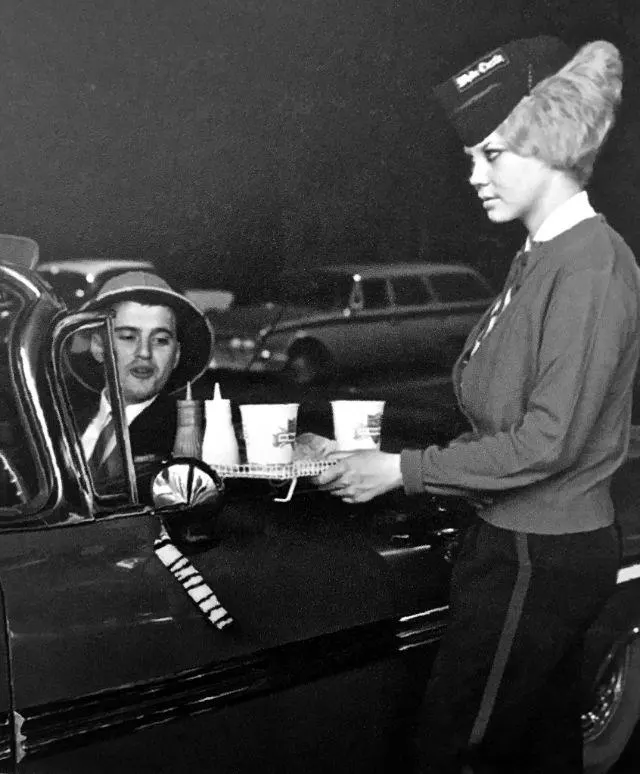
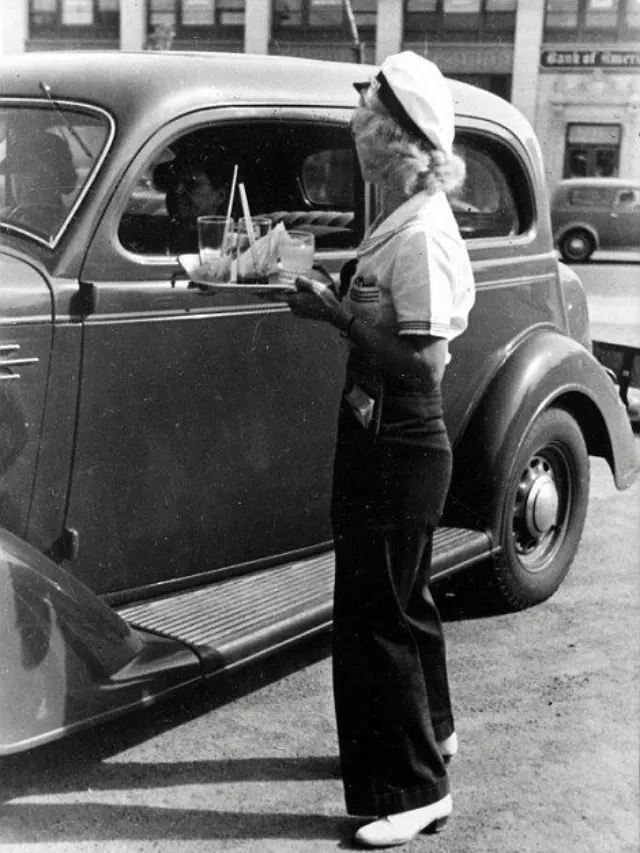
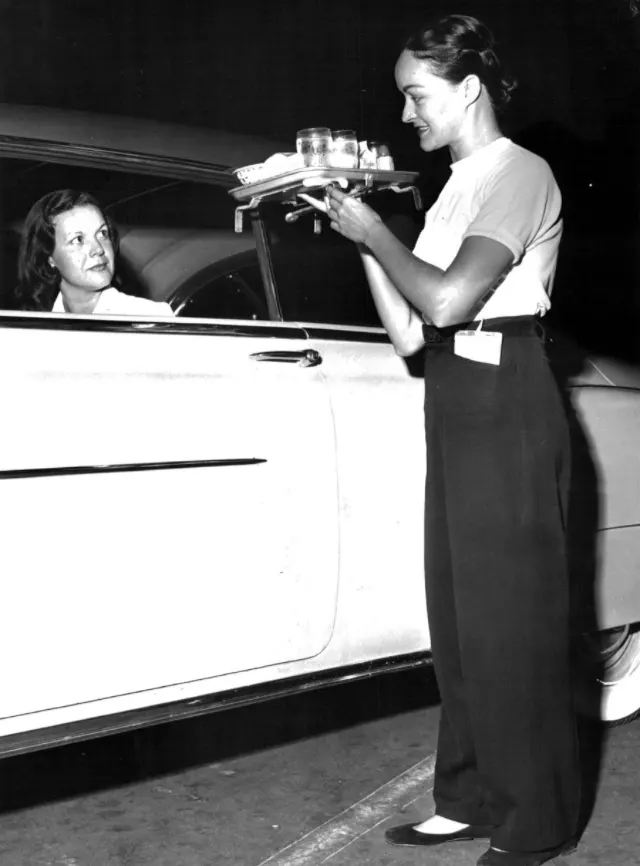
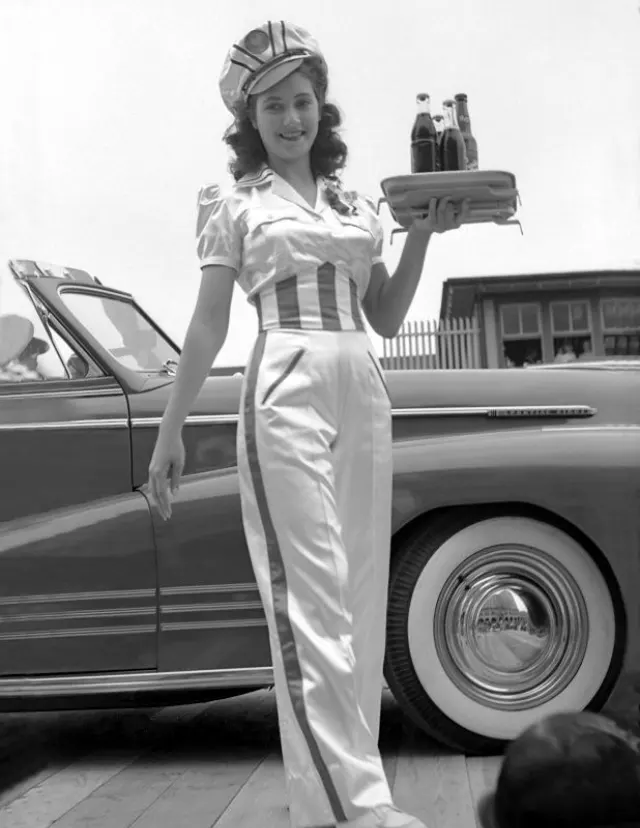
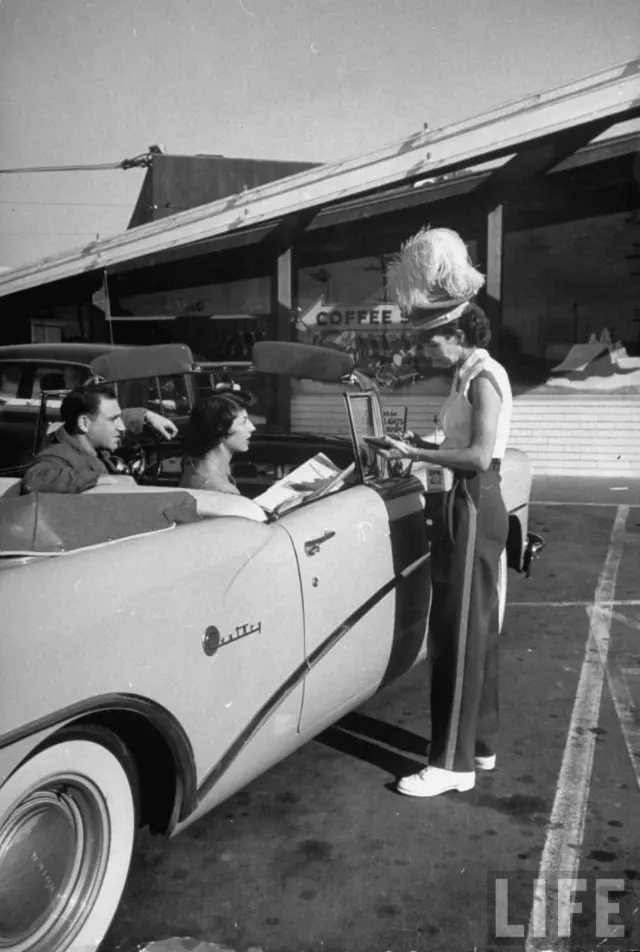
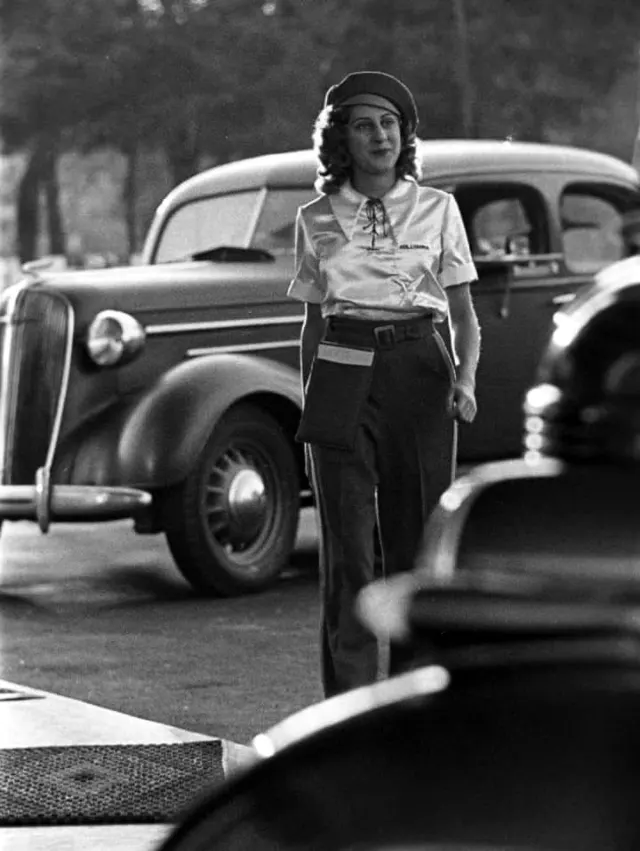
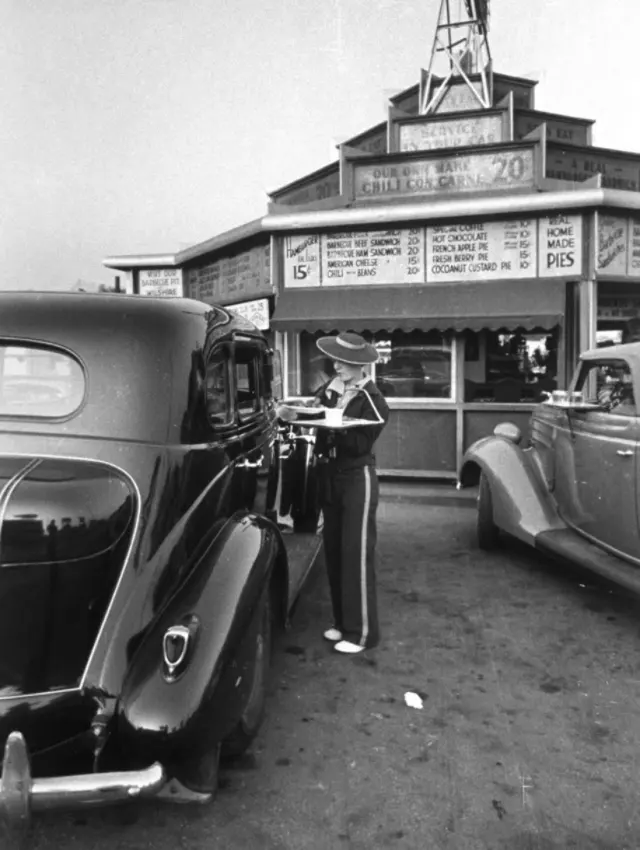
(Photo credit: Wikimedia Commons / RHP via Flickr).
